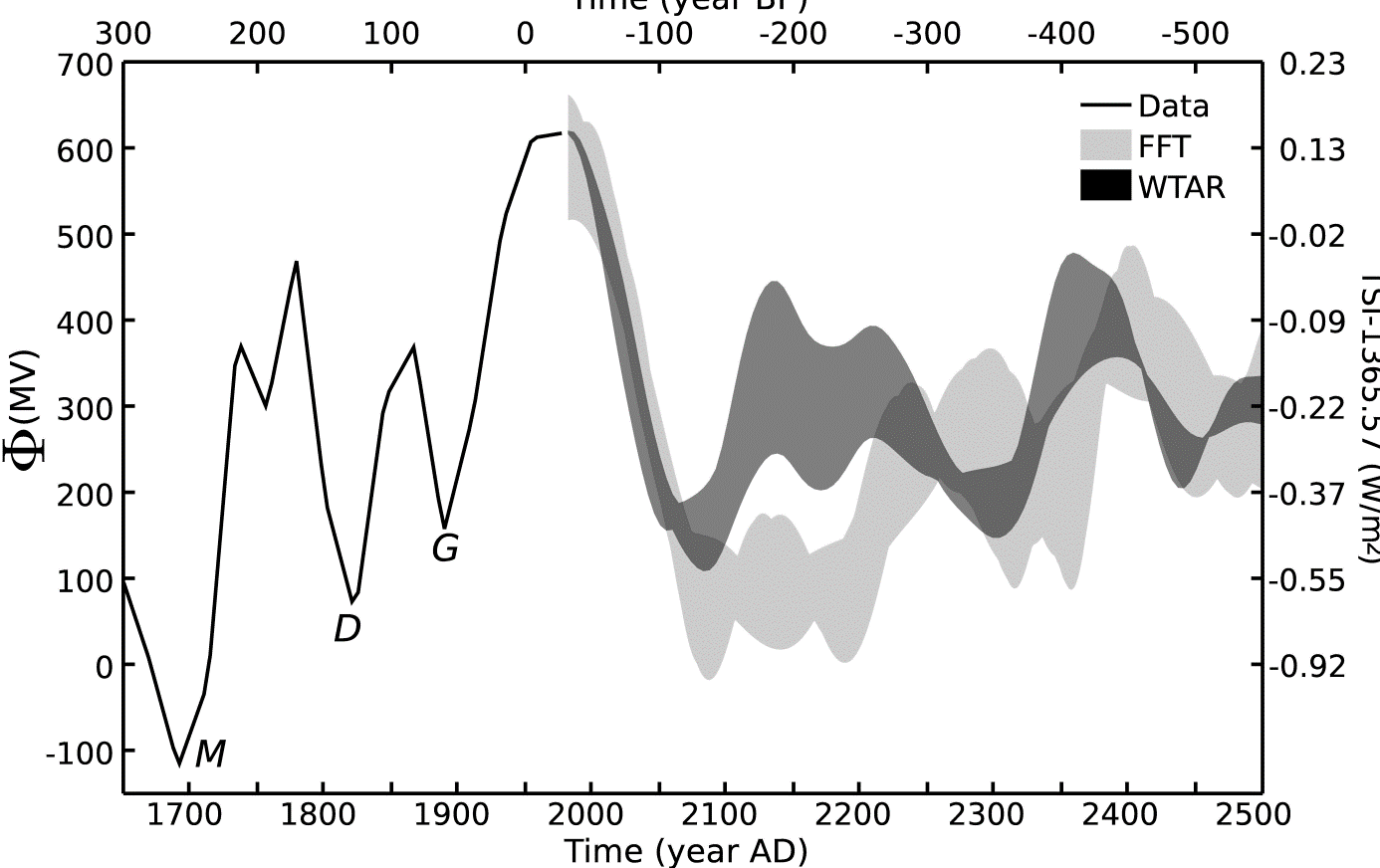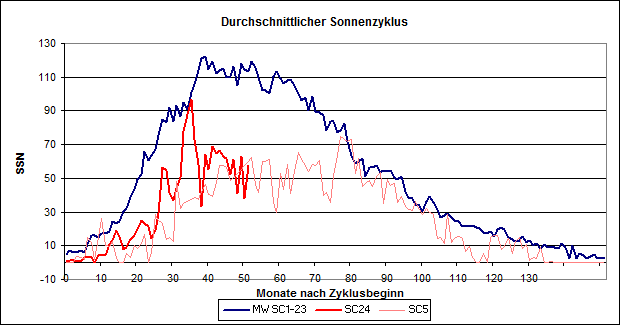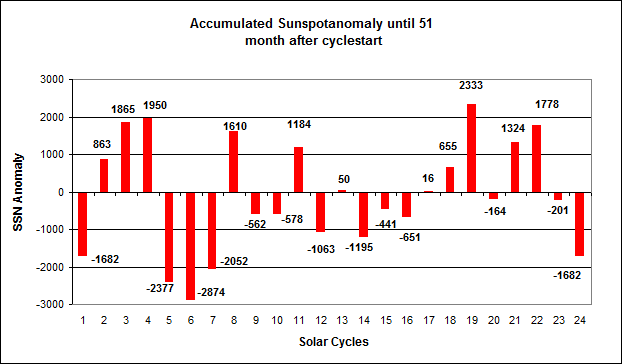
Friedhelm Steinhilber, Jürg Beer: Prediction of solar activity for the next 500 yearsHowever, as shown by the graph below, the current solar cycle [SC 24, red] is already closely tracking the first solar cycle [SC 5, pink] of the Dalton Minimum, and both are quite weak in comparison to the average of solar cycles 1 through 23 [blue].
Abstract: Recently a new low-noise record of solar activity has been reconstructed for the past 9.400 years by combining two 10 Be records from Greenland and Antarctica with 14 C from tree rings [F. Steinhilber et al., 2012]. This record confirms earlier results, namely that the Sun has varied with distinct periodicities in the past. We present a prediction of mean solar magnetic activity averaged over 22 years for the next 500 years mainly based on the spectral information derived from the record of the past solar activity.
Assuming that the Sun will continue varying with the same periodicities for the next centuries we extract the spectral information from the past and apply it in two different methods to predict the future of solar magnetic activity. First, the two methods are tested by predicting past changes. Our methods are able to predict periods of high and low solar activity for a few centuries in the past. However, they are less successful in predicting the correct amplitude. Then, the methods were used to predict the period 2000-2500.
Both methods predict a period of low activity around 2100 AD. Between 2100 AD and 2350 AD the results are inconsistent regarding the duration of the low activity state in 2100 AD and the level of activity until 2250 AD. Around 2250 AD both methods predict a period of moderate activity. After 2350 AD both methods point to a period of high activity. The period of high activity will end around 2400 AD and will be followed by a period of moderate activity.
The accumulated sunspot anomaly has significantly declined during the current solar cycle:





There have been predictions of a dead cycle (SC25).
There are now indications of how that may come to pass. In this cycle (SC24) the North and South sunspot belts have been repeatedly repulsed from the Solar Equator @ 10-15 degrees latitude. The look now is that of both bands retreating towards the Solar Poles. Should that happen, the seeds of SC25 might be too few to start it. It's anybody's guess from there as to when the Sun will re-generate it's cycles.
The biggest problem with the Sun is that by the time it's readily apparent what is going on, it's well into whatever it's going to do.
If you can stand it, don't wear sunglasses, and pay close attention to subtle changes in sunlight color and intensity. Stars are pastel in color, and difficult to notice changes in. Lose the sunglasses.